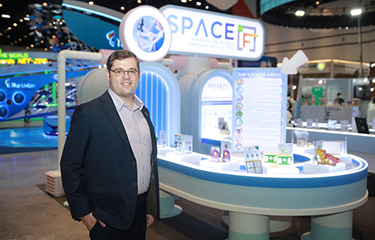Chris Aurand is a Bangkok, Thailand-based open innovation leader at Thai Union Group and has a front-row seat to the innovation occurring Asia’s seafood industry. He will be speaking at the Asia Pacific Agri-Food Innovation Summit in Singapore from 31 October to 2 November and, in advance of that event, spoke to SeafoodSource about what’s emerging from the region’s seafood innovators.
SeafoodSource: There have been a bevy of alternative aquafeed ingredients coming to market recently, such as insect-based feed. Are there any examples you can point to of similar breakthroughs on the consumer side of the market?
Aurand: We are starting to see interesting applications of insect proteins in consumer products in Thailand. The insects being grown for consumer application are crickets, mealworms, silkworms, sago worms, and even fruit flies. We are also seeing growth of insect products being sold directly to the consumer – from frozen crickets, cricket burgers, and baked goods incorporating insect proteins to insect oils being used in cosmetic products. The cricket protein producers are also exporting their products to Europe for use in sports nutrition applications.
SeafoodSource: Are there many products stemming from algae?
Aurand: Globally, we have been monitoring an increase of algae and seaweed powders being incorporated into products ranging from breads in the U.S., to smoothie blends leveraging seaweed’s health benefits, to algae used in alternative seafood products.
A great example of this is Thai Union’s partner Algama, [which] is using algae as a food ingredient to produce a broad range of products from mayonnaise, to egg replacements, to even algae-based seafood. There is a significant opportunity to incorporate sustainable, sea-based ingredients into everyday products, leveraging the natural umami flavor and the added nutritional benefits.
SeafoodSource: Are you seeing examples of innovation coming out of China?
Aurand: We are beginning to monitor the innovations coming out of China. There has been an uptick in innovations [there] in the aquaculture space, both onshore and offshore.
SeafoodSource: What innovations in Chinese aquaculture have caught your attention?
Aurand: The Chinese large-scale aquaculture ships deemed as “smart farming ships” that are producing large yellow croaker with a capacity of 3,700 tons per year just received Aquaculture Stewardship Council certification. This is an interesting development for the aquaculture space.
SeafoodSource: Singapore and Thailand both appear to want to become Asian hubs for innovation in food. Do each have a different approach and offering in this regard, or is it more of a competition between the two locations for the best ideas, products, and personnel?
Aurand: There is an opportunity for Singapore and Thailand to work together instead of competing [against] each other to bring new food and agritech innovations to the Southeast Asian and global markets. The countries need to leverage their individual strengths; for example, Singapore has been able to attract the top talent in R&D and build a strong startup ecosystem by injecting significant capital into the market. This has attracted many multinational companies to establish regional R&D centers in Singapore. The challenge that Singapore faces is ...
Photo courtesy of Thai Union








